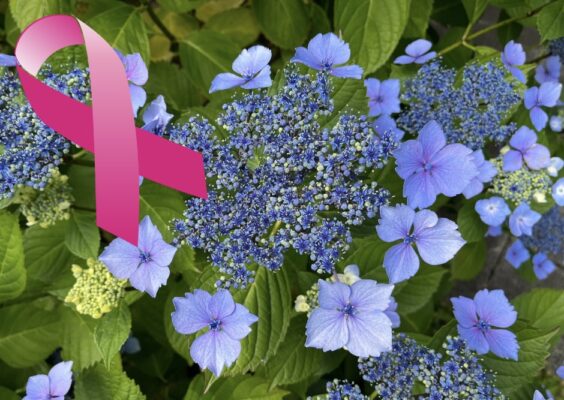This is the sixth edition of The 2 Susans, a monthly LinkedIn newsletter produced by Dr. Susan Baumgaertel and Dr. Susan Vogler.
We are two doctors who are curious about aging. Our newsletter embraces conversations about aging from many different perspectives—medical, psychological, societal and even personal. Of course we’ll have a lot of content that pertains to peri/menopause and beyond.
To read the August edition, click here. To read this new edition on LinkedIn, click here.
Enjoy the reprint below!
Breast Cancer Basics
It’s October! This month we decided to focus on Breast Cancer Awareness Month, even though it’s also Menopause Awareness Month—two great topics. In this newsletter you’ll get a great overview of breast cancer screening and detection by Dr. Vogler, and I’ve added some thoughts on breast cancer risk reduction. And, never fear, World Menopause Day is October 18th so stay tuned for more great info!
Susan V:
Breast Cancer Awareness Month aims to raise awareness about breast cancer, encourage early detection, and advocate for research to find a cure. The goal is to increase public knowledge about breast cancer, such as its risks, prevention, early detection, and treatments. Empowering women to take charge of their health helps promote early diagnosis and improve outcomes.
The pink ribbon is the universal symbol for breast cancer awareness. It represents hope, support, and solidarity for women diagnosed with breast cancer, as well as honors those who have lost their battle. Organizations, communities, and individuals wear pink ribbons and display pink-themed merchandise to support the cause.
Except for skin cancers, breast cancer is the most common cancer in women in the United States. One in eight women will develop the disease in their lifetime. It is the second leading cause of death, and more than 40,000 women will die of breast cancer in 2024. Black women have the highest death rate and are more likely to develop breast cancer before the age of 40 years when compared to White women.
Detecting breast cancer early and getting timely and appropriate treatment are the two most important factors for preventing death. Finding breast cancer early, when it is small and has not spread, is more accessible to treat and most always offers the best outcome. A mammogram performed annually starting at age 40 can detect small changes in the breast even before there are symptoms such as breast discomfort, nipple pain or discharge, swelling in the breast or a palpable lump, and swollen lymph nodes. A newer mammogram, called 3D, appears to find more breast cancers and can be helpful in women with more dense breasts. 3D mammogram imaging, however, is not available everywhere.
Mammograms can occasionally overlook abnormal areas, particularly in women with dense breast tissue. Therefore, a breast ultrasound may be necessary for a more thorough examination. Ultrasound can tell the difference between a fluid-filled and solid mass and help determine whether a biopsy is needed. Doctors recommend a breast MRI for certain high-risk women, such as women with the BRCA 1 or BRCA 2 gene, and other women who have a calculated 20-25 % greater lifetime risk of developing breast cancer.
Although there is no guaranteed way to prevent breast cancer, several lifestyle measures can help lower the risk. For example, avoiding weight gain, particularly after menopause, can be beneficial. Hormones, especially estrogen, have been linked with breast cancer. After menopause, most of the circulating estrogen is generated by fat tissue; therefore, higher body weight, which usually indicates more fat, is linked to increased estrogen levels and a greater risk of developing breast cancer. Additionally, it is advised to avoid alcohol consumption, as even one serving per day can raise the risk of developing breast cancer by 10%, with the risk increasing further with higher alcohol intake.
The main takeaway:
Maintain a healthy weight by eating a well-balanced diet and exercising regularly. Avoid drinking alcohol. Get your mammogram every year starting at age 40 years. And don’t forget to wear Pink in October!

Sunrise on a late summer morning. Photo taken by Dr. Susan Vogler.
Susan B:
Breast Cancer Risk Reduction
Hot on the heels of Dr. Vogler’s information on breast cancer screening, I thought I’d write a bit about navigating breast cancer risk.
There is a good risk assessment tool available to all called the Tyrer-Cuzick Risk Assessment Calculator (click here for the link).
It’s an easy, online tool that allows input (if known) of the following:












It then displays results for your 10-year risk and your lifetime risk of developing breast cancer, compared to the U.S. population average.
Earlier this year I entered my data and received the following results:


Gulp!
I had recently navigated treatment for cancer (not breast cancer) this year already, so I made an appointment with my oncologist to discuss breast cancer risk reduction options.
There are medications (tamoxifen, anastrozole, letrozole, exemestane) that have been shown to reduce risk of developing breast cancer. These medications are also given to reduce risk of recurrence in women who have already been treated for breast cancer.
Along with lifestyle modification it’s nice to know that there are medication options for women trying to be proactive. Because of my high risk, the other way I’m proactive is getting an annual mammogram with tomosynthesis (3D), alternating every six months with a breast MRI.

Know your risks and personalize your breast cancer screening options by discussing with your physician or breast specialist.

Breast cancer awareness ribbon superimposed over mountain hydrangeas in a Seattle neighborhood. Photo taken by Dr. Susan Baumgaertel.


Let us know the aging topics YOU are curious about. Please also share this newsletter in your network and tag us—we are so grateful.
Susan B: susan@mymdadvocate.com
LinkedIn, myMDadvocate, MenopauseMenu, The Menopause Menu book
Susan V: susan@voglermedical.com
The 2 Susans newsletter is for informational purposes only. It does not represent medical advice and is not intended as a substitute for professional advice, diagnosis, or treatment. Always consult with your private physician.
